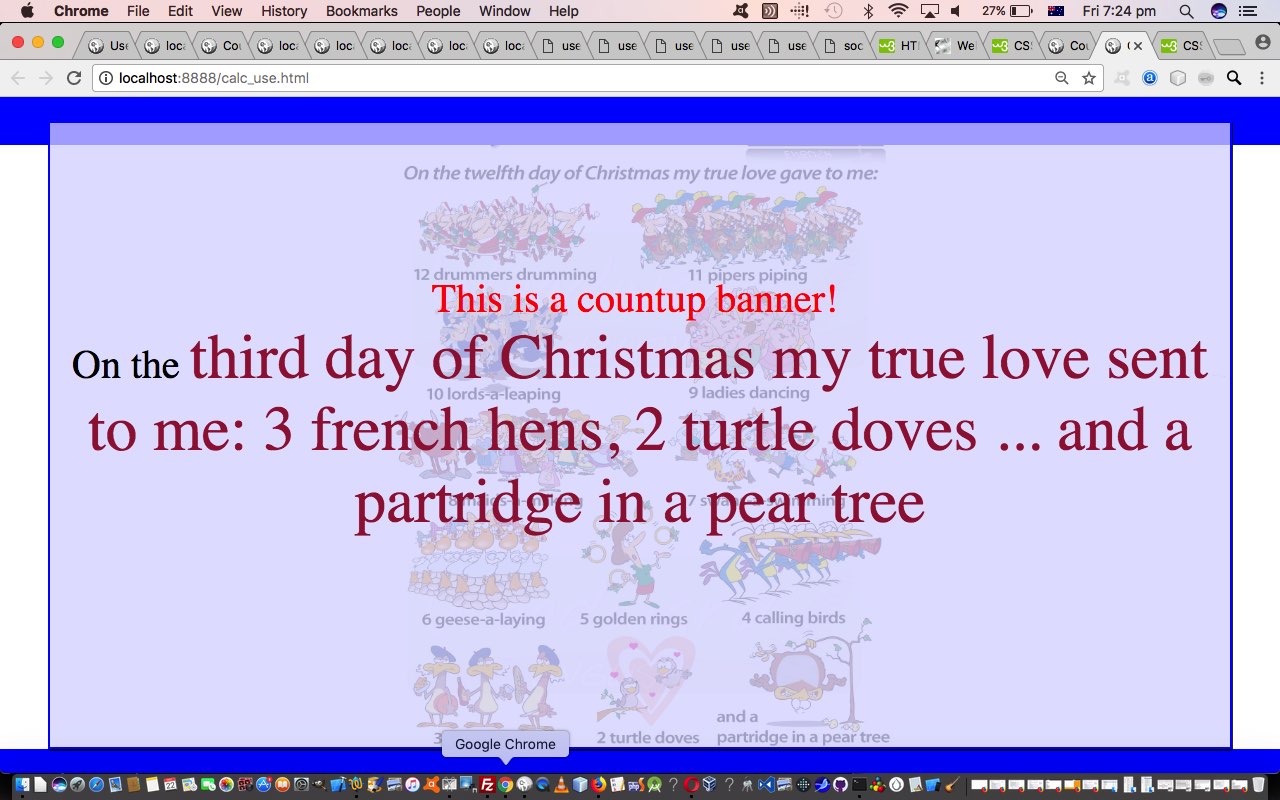If you were to ask me which programming component is most vital to web application development, I’d not be Robinson Crusoe in saying …
Without a doubt, Javascript
… and with that thought in mind we have a two pronged motive to see how far we go developing some web applications that “don’t use Javascript”, calling into play the …
- meaning of “missing”, as in, our code is “missing” Javascript … as well as how I feel with the masochism of the exercise, calling into play the …
- meaning of “missing”, as in, it’s hard work writing meaningful web applications without Javascript … but I guess we’ll learn a bit from the exercise of “see where we go”, allowing for the fact, not today, but down the track, that we will allow the use of server-side languages such as PHP
Okay, so, given that restriction, let’s see today’s challenge, to just use, in a web application …
- HTML
- CSS
… and here is where we have to point out that CSS3 introduced to us some functionality that improves the prospects for web application design “interest” without using Javascript (though it is hard to convince me even so, that I am not “missing” Javascript) here. CSS3 introduced to us …
- calc method to assist with defining width and height and size dimensions along with operator “+” and/or “-” offset calculation opportunities, and which we’d have used the Javascript window.getComputedStyle and/or [element].getBoundingClientRect methods to cover this (in a much more unwieldy way, as you would probably surmise)
- CSS variables we started talking about here at CSS Variables Primer Tutorial
- CSS3 @keyframes rules we first talked about at CSS3 @keyframes Rule Primer Tutorial that assist with animations that we can make work via …
- CSS3 transitions for scheduled functionality (we’d have used Javascript setTimeout (and setInterval) methods to cover the same “territory”) we first talked about at CSS3 Transition Primer Tutorial … specified with CSS Criteria involving …
- CSS Selectors :after and :before (and often, as for today’s work, with the content: CSS property) first talked about here with WordPress Bullet Point CSS Styling Primer Tutorial
… and we use all of these in our Festive Season themed web application today, you can try at this live run‘s calc_use.html (free of any Javascript (but “why” springs to mind … because it is NOT there, perhaps?)).
Here’s the other thing about today. Our long sought after “just make the body background be semi-transparent” but not its foreground parts, was solved, for us via the great advice of …
- https://stackoverflow.com/questions/35669563/changing-the-opacity-of-background-image-in-css was a great link regarding semi-transparent background via CSS like …
body {
background: URL(https://www.woodwardenglish.com/wp-content/uploads/2013/12/12-days-of-christmas.jpg) no-repeat center center fixed;
background-size: contain;
}
.banner {
background: rgba(220,220,255,0.8);
}
- https://developer.mozilla.org/en-US/docs/Web/CSS/:root taught me how the :root { } CSS descriptor was a good place to define CSS (global) variables, thanks
- https://developer.mozilla.org/en-US/docs/Web/CSS/calc taught me lots regarding how to use CSS calc method, thanks
- https://codepen.io/robinrendle/embed/MaVPbo?height=300&theme-id=1&embed-version=2&slug-hash=MaVPbo&default-tab=result&user=robinrendle taught me lots of setting up the animation and transitioning in CSS, thanks
- https://www.google.com.au/search?q=lyrics+to+twelve+days+of+christmas&ie=utf-8&oe=utf-8&client=firefox-b-ab&gfe_rd=cr&dcr=0&ei=Z0U8WpLKEobp8wfejKjQDg is a great link to some lyrics, thanks
- https://www.woodwardenglish.com/wp-content/uploads/2013/12/12-days-of-christmas.jpg was link to very useful background image, thanks
If this was interesting you may be interested in this too.



